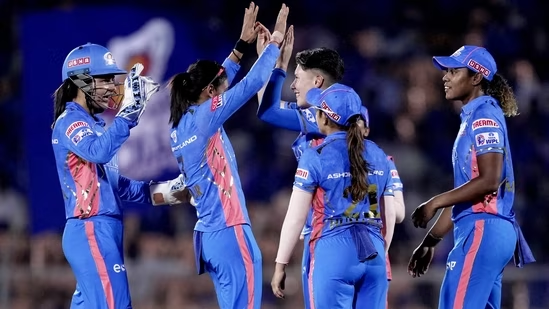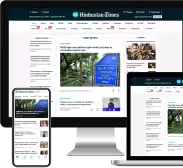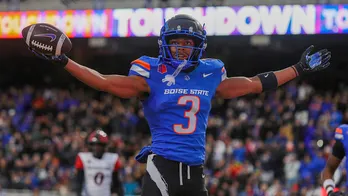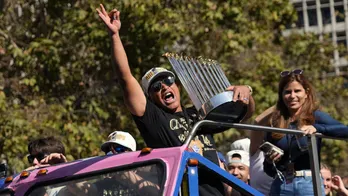Why sponsors are batting for Women's Premier League
The day after the Women’s Premier League (WPL) finale took place in Mumbai’s Brabourne Stadium between Delhi Capitals and Mumbai Indians cricket teams on March 26, the league’s broadcasting and streaming partner Viacom18 claimed that the tournament’s inaugural season had delivered the highest viewership on any women’s event globally. Majority owned by Reliance Industries, Viacom18 was referring to WPL’s digital footprint through its streaming app JioCinema, which it said, clocked the highest watch-time — more than 50 minutes per match per user.  PREMIUM
PREMIUM
In a statement, Viacom18 Sports CEO Anil Jayaraj said: “Our vision is to nurture the Tata WPL into the biggest women’s sporting league in the world, and this is a big leap in that direction. To see it already on its way to becoming the largest viewed sports event in the world in the first season is a remarkable feat and testament to its potential.”
The company claimed the final clash saw more than 10 million ‘new’ viewers tune into JioCinema though it did not share further details. The figure could not be independently verified, though rival broadcasters alleged the viewership numbers were inflated.
Viacom18 did not respond to queries on WPL’s performance and potential.
However, the media industry experts HT spoke to said that the league that began on March 4 and concluded on March 26, saw a television reach of about 65-70 million. Though comparing the newly launched WPL to the 15-year-old men’s Indian Premier League (IPL) would not be fair, in a good year, the television reach of men’s IPL for the Disney Star network was about 400 million. In 2022, it dropped to 360 million owing to IPL fatigue and resumption of mobility after two Covid years. When Disney+Hotstar held the digital streaming rights, the peak concurrent viewership (those watching the match at the same time) of IPL on the app was upwards of 20 million.
Vinit Karnik, head of sports, esports and entertainment at GroupM South Asia, however, said brand-new WPL cannot be compared with a mature league like IPL. “WPL has done well. Anything in its first year has to be well received and generate positive social media chatter, which it did,” he said.
To be sure, the Board of Control for Cricket in India (BCCI) floated the tender for media rights for the women’s cricket league in December 2022. In January, Viacom18 won both digital and television media rights for ₹951 crore. Disney Star, the only other contender, made a very low bid for streaming rights. BCCI moved fast and declared five winning bids of team owners in January itself. The Mumbai franchise was won by IndiaWin Sports Private Limited, a subsidiary of Reliance Industries that also owns the IPL team Mumbai Indians. The Bengaluru franchise went to Royal Challengers Sports Private Limited owning RCB in the IPL while the Delhi Capitals franchise, co-owned by JSW and the GMR group, won the rights to operate the women’s league Delhi team. Adani Sportsline, the sports arm of the Adani group, bought the Ahmedabad franchise Gujarat Giants. Capri Global Holdings Private Limited (CGCL) won the bid for the Lucknow franchise and called it UP Warriorz.
The WPL, hurriedly scheduled to be played in March, was ill-timed, said ad industry experts and sports marketers. It came at the end of the financial year for many brands that had already exhausted their advertising budgets. It was also a period marked by funding crunch for startups and macro-economic headwinds for businesses. Besides, WPL was slated just before IPL — a massive, proven sports property for which advertisers set money aside. It’s hardly surprising then that the women’s cricket league generated around ₹150 crore in advertising for its inaugural season, according to people tracking media spends.
The sum may seem underwhelming seen in the context of more than ₹3,500 crore that IPL generated last year but then the men’s tournament has been built over a period of 15 years. Besides, WPL had fewer teams and matches and the tournament was over in 22 days with limited free commercial time available on TV.
Tuhin Mishra, managing director and founder of Baseline Ventures, a firm that manages a bevy of sportspersons including cricketers, said in a country that is used to watching men’s cricket, viewership for women’s games needs to be built. “Men’s cricket is a different beast altogether. It was big even before the IPL. So, we should celebrate WPL. Earlier BCCI would club women’s cricket with men’s games in TV deals. It was given more as a freebie. Now it is being showcased separately,” he said.
Not just that. It has got its own set of sponsors even though the sponsorship rates or price of a 10-second ad spot may be a fraction of that of IPL. Mishra said several women-centric brands came on board this year and more may follow in future seasons. Some of the team franchises were backed by brands such as Mia (a jewellery brand from Tanishq), Joy Personal Care, Lotus Herbals and Himalaya Face Care.
The league itself had TATA Group as the title sponsor which has signed up for five seasons. Others on the list include strategic timeout partner Ceat, pouring partner Amul and fantasy league partner Dream11 — each spending between ₹2.5 crore and ₹6 crore per season for these partnerships.
Dheeraj Sinha, CEO, Leo Burnett, South Asia said the league could have done much better in terms of advertiser response. “It just needed to have been planned and thought through better in terms of timing. The property will need backing and support for some time,” he added.
That should not be a challenge as cricket remains the most sought-after sport for advertisers. In 2022, the Indian sports industry, in terms of sponsorship, crossed ₹14,000 crore of which 85% was contributed by cricket, according to the Sporting Nation Report 2023 by GroupM ESP.
Like Mishra, Karnik believes in the long-term future of WPL. For starters, BCCI has taken the responsibility to launch it as a distinct property and is unlikely to drop the ball on WPL. Secondly, it is backed by large companies where three out of five franchises have experience in marketing, building and running profitable men’s IPL teams. “They will ensure WPL franchises become profit centres too,” said Karnik. Lastly, the broadcasting partner Viacom18 has a strong base and is expected to make the tournament, televised on a bunch of channels in its network and streamed free for consumers on the JioCinema app, even bigger.
Mishra and Karnik point to other upsides of WPL for women’s cricket in the country. Talent scouting for women cricketers was absent so far. Team franchises will change that. Not just that, more women will get a chance to play. “When they play the domestic circuit, they are not in the limelight. WPL gives instant recognition and will fast-track some of them into the senior team just like what IPL did for men,” said Mishra.
What WPL requires is momentum for the next 2-3 years. It is a scalable and sustainable property, said Karnik, adding, “It’s for the audience to pick it up and make it big.”
Experience unrestricted digital access with HT Premium
Explore amazing offers on HT + Economist Start 14 Days Free Trial Already Subscribed? Sign In
Disclaimer: The copyright of this article belongs to the original author. Reposting this article is solely for the purpose of information dissemination and does not constitute any investment advice. If there is any infringement, please contact us immediately. We will make corrections or deletions as necessary. Thank you.







